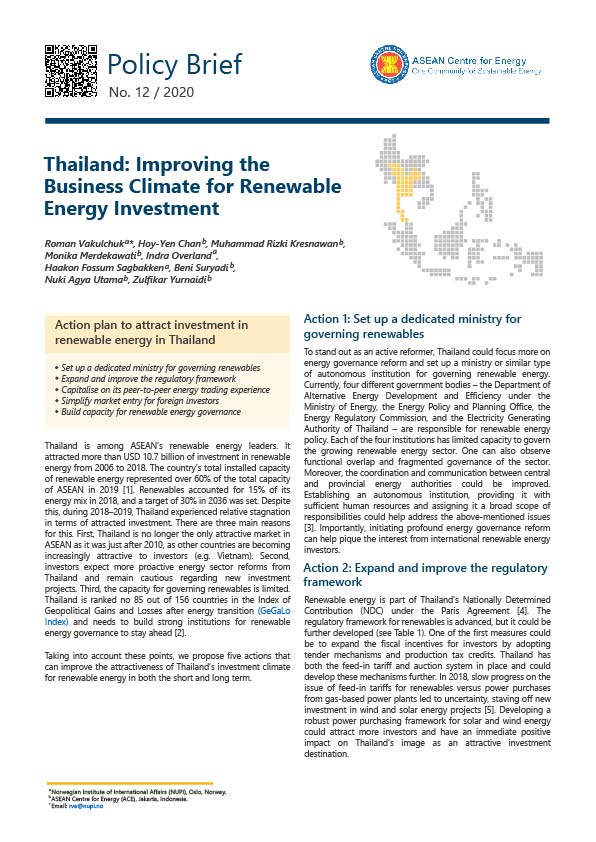
Category
Tag
Author
Roman Vakulchuk, Hoy-Yen Chan, Muhammad Rizki Kresnawan, Monika Merdekawati, Indra Overland ,
Haakon Fossum Sagbakken, Beni Suryadi, Nuki Agya Utama, Zulfikar Yurnaidi
Thailand is among ASEAN’s renewable energy leaders. It attracted more than USD 10.7 billion of investment in renewable energy from 2006 to 2018. The country’s total installed capacity of renewable energy represented over 60% of the total capacity of ASEAN in 2019 [1]. Renewables accounted for 15% of its energy mix in 2018, and a target of 30% in 2036 was set. Despite this, during 2018–2019, Thailand experienced relative stagnation in terms of attracted investment. There are three main reasons for this. First, Thailand is no longer the only attractive market in ASEAN as it was just after 2010, as other countries are becoming increasingly attractive to investors (e.g. Vietnam). Second, investors expect more proactive energy sector reforms from Thailand and remain cautious regarding new investment projects. Third, the capacity for governing renewables is limited. Thailand is ranked no 85 out of 156 countries in the Index of Geopolitical Gains and Losses after energy transition (GeGaLo Index) and needs to build strong institutions for renewable energy governance to stay ahead [2].Taking into account these points, we propose five actions that can improve the attractiveness of Thailand’s investment climate for renewable energy in both the short and long term.
Action plan to attract investment in renewable energy in Thailand